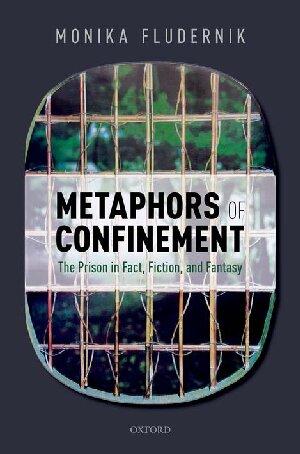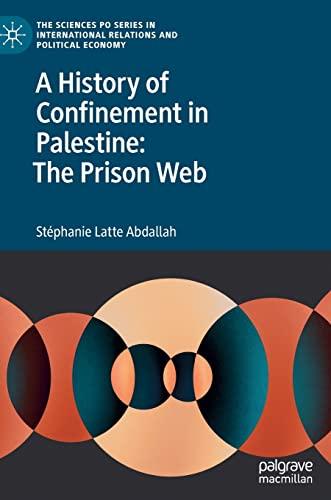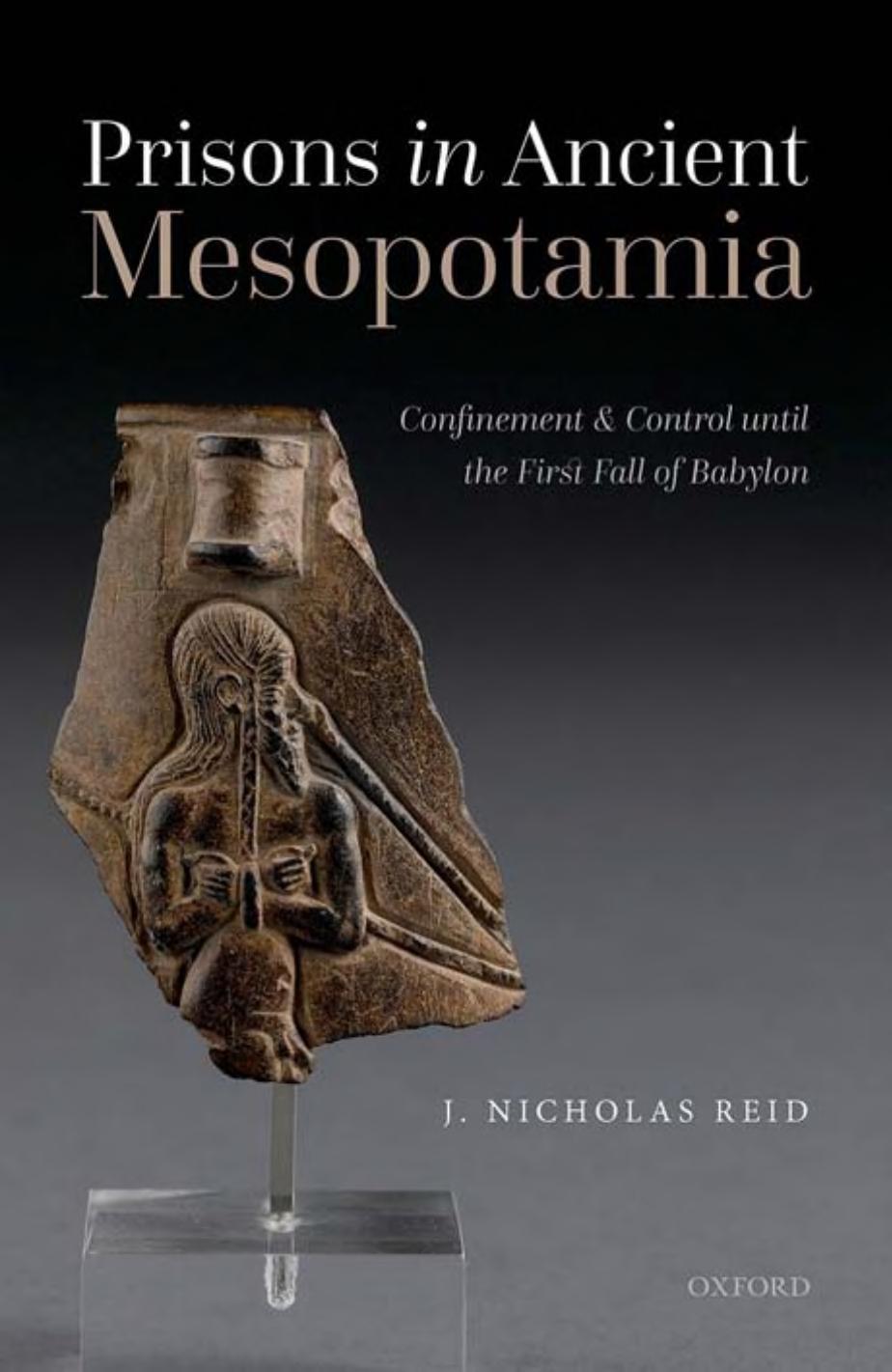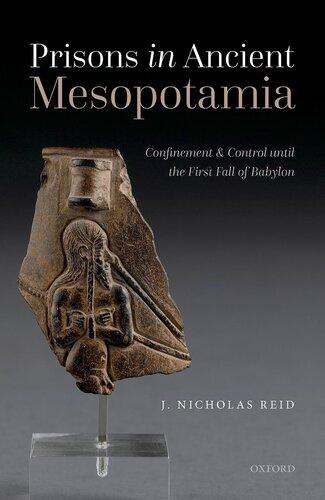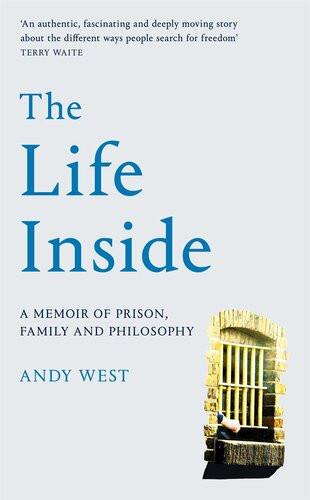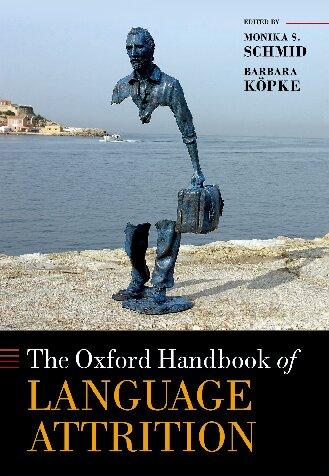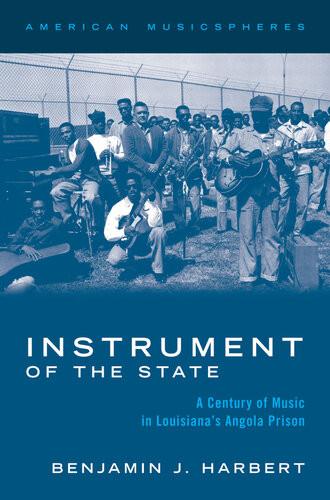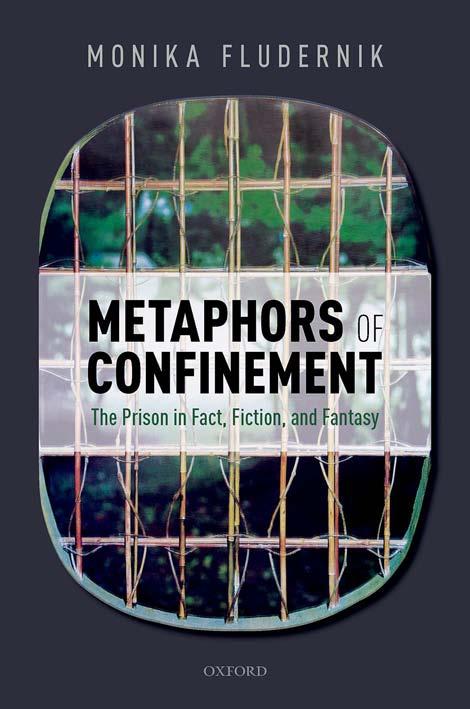Metaphors of Confinement
The Prison in Fact, Fiction, and Fantasy
MONIKA FLUDERNIK
1
Great Clarendon Street, Oxford, OX2 6DP, United Kingdom
Oxford University Press is a department of the University of Oxford. It furthers the University’s objective of excellence in research, scholarship, and education by publishing worldwide. Oxford is a registered trade mark of Oxford University Press in the UK and in certain other countries
© Monika Fludernik 2019
The moral rights of the author have been asserted
First Edition published in 2019
Impression: 1
All rights reserved. No part of this publication may be reproduced, stored in a retrieval system, or transmitted, in any form or by any means, without the prior permission in writing of Oxford University Press, or as expressly permitted by law, by licence or under terms agreed with the appropriate reprographics rights organization. Enquiries concerning reproduction outside the scope of the above should be sent to the Rights Department, Oxford University Press, at the address above
You must not circulate this work in any other form and you must impose this same condition on any acquirer
Published in the United States of America by Oxford University Press 198 Madison Avenue, New York, NY 10016, United States of America
British Library Cataloguing in Publication Data
Data available
Library of Congress Control Number: 2019931802
ISBN 978–0–19–884090–9
Printed and bound by CPI Group (UK) Ltd, Croydon, CR0 4YY
Links to third party websites are provided by Oxford in good faith and for information only. Oxford disclaims any responsibility for the materials contained in any third party website referenced in this work.
To my mother, Ingeborg Böhm, with gratitude and in memory of her love and support
Preface
This is a book about carceral metaphors and the carceral in fact and fiction. The prisons I deal with are mainly literary and imaginary ones, but also always ‘real’, whether the texts deal with penal institutions or metaphorical prisons that affect their protagonists’ minds. One of the prime theses of this book is that a distinction between the real (historical and contemporary sites of incarceration and discourses about imprisonment) and the imaginary (representations of these in literature and the arts as well as metaphorical references to prisons) fails to explain the omnipresence of the carceral in literature but also in the world. Prisons are (perceived to be) everywhere, in language, in texts, in images, in our minds. Our carceral imaginary operates not merely inside jails but also outside correctional institutions in our everyday world. We are concerned with prisons not only when we engage in the politics of security and punishment, moulding penal confinement through legislation and the implementation of these laws; our experience of and fantasies about confinement also pervade social and societal arenas that have no immediate connection with crime, punishment, the police or the law. Politically, too, the past decade has pushed the issue of imprisonment to the front of the news, whether in relation to the USA’s unparalleled rise of the prison population (currently at over 2.3 million (Tonry 2016)), the incidences of torture and abuse at Guantánamo Bay, Abu Ghraib, and elsewhere, or the financial costs of full-scale incarceration. More generally, Western culture is steeped in images of imprisonment, and this fact shapes my essential questions. What are the function and uses of carcerality in our societies? What are its ideological rewards and its psychological compensations?
More specifically, this book deals with a wide variety of recurrent topoi and images that permeate literary texts from the Middle Ages to the present. These include, among others, tropes such as the world as prison and prison as world topoi, the metaphor of the prison-like home or of the prison as refuge and hermitage, of the body as prison, and of the prison amoureuse, the prison of love. This inventory, which comprises many more culturally fossilized figurations of the carceral, displays a great variety of textual manifestations. Historically, these were able to adapt to political and institutional developments such as the invention of the penitentiary in the late eighteenth century. The dialectic of familiar tropes and changing conditions of application constitutes another important facet of the present study. The present book is the first comprehensive study of carceral imagery. Despite some initial work on the container metaphor by Mark Johnson (1987), neither linguistic metaphor theory nor literary criticism have so far systematically focused on the pervasive prison metaphors in literary and non-literary texts.
Finally, the book concerns not merely our emotional ambivalences regarding the carceral, but also the question as to how literature wrestles with the personal experience of confinement, with its horror and with the suffering and pain that it entails. Like texts that deal with the overcoming of trauma or of other elementary life experiences—death, searing pain, spiritual transcendence—the literature about imprisonment is ultimately concerned with the ineffable, with that which almost cannot be spoken about but nevertheless has to be represented in words. The carceral eludes easy narratability not merely on account of its affinities with personal trauma; it additionally thwarts tellability because prison life is banal, repetitive, and lacks eventfulness. Life behind bars seems to freeze inmates’ lives; it converts prisonized experience into unlimited stasis or an unceasing repetition of sameness, causing an experiential void, a feeling of non-existence, or a lack of identity. Imprisonment displays all the characteristics of liminality, of a threshold, but undermines the transitional quality of this chronotope by extending the time of this borderline space into a heterotopia of exile.
The verbal articulations in writings about the prison pertain to the realm of the aesthetic; they are subject to the rules of art. An aesthetics of horror and suffering offers palpable freedoms of expression, but it also raises ethical questions. Is it legitimate for art to play with the ordeals of real people languishing in detention? Does (some) literature thrive on the sensational aura of incarceration and, like the Gothic novel, derive a thrill from the fate of those caught in the cruel grip of an oppressive regime or in the clutch of penal punitivity? Does literature, instead of making political statements against the dehumanizing conditions of the carceral, evade its ethical responsibilities and indulge in vicarious sadism (or masochism; or both)? And yet it seems to be the case that only in the virtual scenarios of art are we able to perceive some moral questions from a virtual perspective, or to sidestep our ineluctable subjection to the ideologies and political influences of our immediate environment.
Every day we are exposed to the appellative force of penal and judicial rhetoric (of law and order, us vs. them, crime and punishment, right and wrong, freedom vs. terrorism, and so on). These discourses are mostly exclusionary, aggressive, retributive, and their main recipe is that of incarceration or exile—lock them up or shut them out. Literature predominantly opposes this ethics of punishment and eviction by looking at individuals acting on both sides of the locked door— depicting those who shut others in and those who have been deprived of their freedom. At the same time, one has to acknowledge that, by translating violence, cruelty, and suffering into the realm of the aesthetic, literature runs the risk of idealizing social protest and political rebellion, or of legitimating their repression. Even more worryingly, literature may be accused of aestheticizing cruelty or suffering, thereby reifying them as consumable vicarious experiences.
Most distressingly, it could be argued that literature ends up catering to the unsavour y desires of irresponsible sensationalism, or turns the serious issues
treated in the text into mere accessories of its main concerns: style, emotional affect or the thrill of exoticism and the perverse. From this perspective, art turns into an object of consumption that no longer performs its speculative, contemplative, and critical functions. Yet prisons are also a social fact whose many real-life manifestations will hover on the borders of our awareness. The literary text images a prison or metaphorically invokes a carceral scenario; it foregrounds its fictionality, veiling or marginalizing the real-life import of the politics and ethics of penal confinement. This veiling is both its strength and its weakness. The paradox of carceral politics as aesthetics, and of carceral aesthetics as ideology, mirrors that of the place of prison in society. It reflects on the inherent marginality of the prison, its status as heterotopia, as that realm in, but also outside of, society which remains alien to that larger segment of the population who have been lucky not to have had direct experience of it. In fact, the carceral would cease to elicit so much fascination and produce so many fantasies if it became as generally accessible as the life of politicians or shopkeepers. It is the prison as a secret and therefore exotic site in the midst of familiar everyday life which fascinates us. Such secret places also define our lives as rooted in environments with heterotopic appendages. These heterotopic sites may then come to function as Derridean supplements and expose the normal world as, likewise, a prison.
A note is in order here regarding the types of prisons or kinds of confinement that will be the topic of this study. The book takes a very broad historical sweep, discussing representative works from English literature, or rather: literatures in English, of all genres from the Middle Ages to postcolonialism, including texts from Irish, North American, South Asian, and African provenance. A few nonEnglish works are considered where appropriate. Films were excluded since there exists already a relatively extensive literature on the prison movie (Crowther 1989; Rafter 2000; Wilson/O’Sullivan 2004; Alber 2007; Caster 2008). As a second overall strategy, I have reduced the mass of literature on captivity by concentrating on penal (including political) imprisonment, covering both pre-trial custody and penal detention proper. My book therefore largely excludes prisons and carceral experiences that occur outside a penal context. It does not deal with prisoners of war, juvenile delinquents (except in one case) or victims of gulags and concentration camps. Nor does it concern itself with slavery, North American captivity narratives, or tales of Barbary Coast captivity. The focus is on the individual prisoner in a correctional facility, not in a camp. The decision to exclude these other forms of imprisonment was mostly pragmatic—to have taken them on board as well would have made the already very large corpus of texts unmanageable. Nevertheless, though not discussed extensively in the text, some of these other types of confinement are alluded to where relevant. Moreover, a number of the insights offered in this work will also be applicable to gulags or captivity narratives. On the other hand, these more collective forms of imprisonment, with their prominent aspect of ethnic victimization and their emphasis on forced labour, suggest that they do
indeed fall into a separate category and should not be conflated indiscriminately with cases of individual penal sentencing and incarceration. Despite the fundamental difference between individual and collective practices of social exclusion, in practice this distinction is of course frequently undermined, as when Catholics under Elizabeth I were accused of treason, or dissenters under Charles II incarcerated for failing to toe the orthodoxic line. I therefore privilege the prototype of individual and personal incarceration, but sometimes look across this selfimposed fence to contiguous areas of interest.
To focus my very extensive material, two decisions have been made. No totalizing narrative is presented; the book does not attempt an overall literary history of the English prison, although historical contextualizations and insights into literary developments play a key role in the study. Nor will this book put forward an overarching thesis to be illustrated exhaustively in relation to all periods and genres of English literature. Though deeply inspired by Michel Foucault’s Discipline and Punish (1975/1979a) and John Bender’s Imagining the Penitentiary (1987) with its theories about the anticipatory depiction of the new model of incarceration in English fiction, this book deliberately avoids a similarly teleological approach. My study does not rely on the assumption of a major paradigm shift, a basic discontinuity between old and new prisons as proposed by Foucault and many studies inspired by his work. On the contrary, this book underlines the textually observable continuities between pre-Benthamite and post-Benthamite representational practices. Indeed, I have chosen to disperse and split the Foucauldian master narrative into a series of tropological and thematic case studies that allow for a multiplicity of concurrent and interweaving mini-narratives. This design enables me to accommodate overall continuities as well as local discontinuities and to illustrate the persistence of topoi and genres through selected stretches of time. Such a focus on the (non-)simultaneity of various developments will also help to highlight aspects in the literary representation of incarceration that are complementary to the Foucauldian paradigm or which, at times, even contradict it. Most importantly, my approach demonstrates the interlacing of many topoi and tropes across genres and historical periods.
The choice of texts analysed in this study is based on two criteria. On the one hand, I have tried to find particularly representative examples for the topoi that I focus on, indicating at the same time that there is a wide range of such cases both diachronically and generically. On the other hand, the selection of texts was motivated by default. Since representations of carcerality (though not discussions of carceral metaphor) have been a staple of literary criticism, with key studies by Victor Brombert (The Romantic Prison, 1975), W. B. Carnochan (Confinement and Flight, 1977), John Bender (Imagining the Penitentiary, 1987), Dennis Massey (Doing Time in American Prisons, 1989), Hal Gladfelder (Criminality and Narrative, 2001), Jonathan Grossman (The Art of Alibi, 2002), Sean Grass (The Self in the Cell, 2003) and Caleb Smith (The Prison and the American Imagination, 2009),
my attempt has been to introduce to readers’ attention works that have so far not attracted intensive analysis from a carceral perspective.
This explains why the book contains relatively little discussion of eighteenthcentury texts, since there exists a great number of excellent contributions to the history of crime and its literary reflection. Let me only mention the work by Ignatieff (1978), Spierenburg (1984, 1991), Sharpe (1985), Beattie (1986), Linebaugh (1991), Gatrell (1994), or Gaskill (2000) on eighteenth-century crime as well as the inspiring critical analyses of literary treatments provided by Hollingworth (1963), Arnold (1985), Faller (1987, 1993), or Gladfelder (2001). I have not been able to avoid discussing Charles Dickens entirely, despite the extensive literature on Dickens and the prison (Collins 1994 [1962]; Tambling 1986; McKnight 1993; Alber 2007; and Alber/Lauterbach 2009—to mention just a few). At times, I have selected a work that so far has not figured in discourses on the prison, though the carceral in other texts by the same author has received ample critical attention. (For instance, Caleb Smith provides an insightful discussion of Hawthorne’s The Scarlet Letter, whereas I focus on The House of the Seven Gables.) Occasionally, I return to landmarks of the literary prison when my own analysis extends and complements that of a previous critic, as is the case for Charles Reade’s It is Never Too Late to Mend, already given an incisive treatment by Sean Grass (2003).
Methodologically, this study utilizes a spectrum of different approaches. The interdisciplinary nature of the monograph arose from the diverse areas of research with which my own work has been concerned during my career. Thus, though my major research orientation, narratology, plays a comparatively minor role in this book, my interest and expertise in stylistics, especially metaphor theory, and Law and Literature studies, as well as in South Asian literature, postcolonial theory and the eighteenth century, have significantly contributed to the unique approach practised in this study, as did the fact that my teaching covers English literature from the thirteenth century onwards. Such a variegated methodological and historical background has provided me with a very special viewpoint on the topic of the carceral in English literature, enabling me to combine a focus on the linguistic surface structure of my sources—the metaphors—with issues of Law and Literature. It has also allowed me to fuse a diachronic with a systematic or theoretical perspective. In my arguments, as outlined in the introduction, metaphor theory, tropology, and topics (the study of topoi), in addition to theories of ideology play an important role in defining the cultural work of prison narratives. In the book, rhetorical and historical analysis as well as plain close reading are pervasive; where appropriate, I also resort to feminist, psychoanalytic, and postcolonial theory. Thematically as well as theoretically, this study is therefore designed on the model of bricolage, that is to say, on the pattern of creative juxtaposition.
The same is true of the structure of the text itself. Since my book does not set out a single thesis which is followed through various stages of argument in individual chapters, the arrangement of chapters focuses on a series of tropes and on
the complex network of cross-references between them. The selected topoi and metaphors are traced in their subtle and often convoluted ramifications, slyly inscribed in the web of literary texture. My presentation picks up on individual threads and follows them through their historical and discursive meanderings, noting how particular strands combine with others, merge, or separate again. Some sections of the volume are concerned with specific theoretical issues (ideology, fictionality, metaphor theory), but all analyse individual tropes or topoi and explore their historical development, documenting the generic diversity of prison writing, and comparing and contrasting representations of carcerality in poetry, fiction, and drama. The broad spectrum of genres and periods on which this study relies makes it possible to outline a variety of developments through the centuries and to illustrate invariance as well as diversity of motifs and forms.
The book is also an indictment of carceral heterotopias from a humanitarian and ethical perspective; an argument pioneered by literature from its inception. Literal carcerality invokes serious social and ethical questions. Ultimately, beyond the linguistic and literary manifestations of carcerality, one needs to confront the real prisons which are often monuments of suffering and injustice.
Chapter Overview
The Introduction (‘Prisons, Images of Confinement, and the Carceral Imaginary’) offers a theoretical overview of the topic of imprisonment and supplies an initial conspectus of major models of (carceral) space. It discusses the study’s relationship to Foucault’s seminal Discipline and Punish, elucidating key aspects of this paradigm and explaining how I extend but also modify Foucault’s work. The introduction also introduces readers to basic terminology in recent metaphor theory, to literary topoi, and to the concept of the carceral imaginary.
Chapter 1 (‘The Prison as World—The World as Prison: Similitudes and Homologies’) is the first in a series of chapters modelled on a chiastic formula. Starting with the most general and all-encompassing chiastic prison metaphor, the chapter deals with two types of metaphors: those that liken the prison to the (or a) world, seeing the prison as a microcosm, and those that project an inverse scenario, in which the world is metaphorically depicted as a prison. Discussing how prison, as a heterotopia (like hell) is conceived both as lying outside the world and as sharing numerous structural features with it, I move to a consideration of early modern similitudes in the ‘character’ literature of Overbury, Dekker, Mynshul, and Fennor. In these texts, prisons are figured, among other source domains, as ships, universities and hospitals—metaphors that underline their structural equivalences to the world in general. Since prisons during the Renaissance and up to the early nineteenth century were run like hotels (thus reflecting the social stratification of society at large), the chapter goes on to
illustrate how precisely prisons were perceived to mirror early modern society, focusing on two city comedies, Eastward Ho (1605) and The City Gallant (1614). From these early modern instances of the prison as world metaphor, I turn to the world as prison trope. (In this book, conceptual metaphors are printed in small caps.) I move from The Beggar’s Opera to twentieth-century literary inflections of the topos in Samuel Beckett’s prose and Edward Bond’s play Olly’s Prison Though prisons no longer reflect society at large (at least in terms of their social composition), perceptions of the carceral as being symbolic of the world continue to have extensive currency, particularly in a postcolonial context (as Chapter 6 will demonstrate).
Chapters 2 and 3 (‘Poeta in Vinculis’) are devoted to the work of authors who have themselves been imprisoned and who have written both autobiographically and imaginatively about incarceration. Chapter 2 concentrates on the early modern period where autobiographical documents are not only rare but also suspect as simple reflections of personal experience. Chapter 2 contrasts Thomas More and John Bunyan as two authors who rose to the status of martyrs and confessors for their faith and depicted imprisonment as a test that God made them undergo. What I particularly foreground are the strategies of imaginative and psychological coping that these authors employ in their autobiographical work. I consider how they reflect the emotional, traumatic experience of incarceration in the imaginative re-enactment of their fiction. Despite these communalities, More and Bunyan could not be more different in many other respects, most basically of course in the clash between their Catholic and Protestant affiliations. The chapter introduces a number of prison tropes besides the world as prison/prison as world metaphor, most prominently in Bunyan the sin as prison trope. My analysis of the texts focuses on the attempt to deduce experiential aspects from highly allegorical and symbolic writings that do not easily allow a factoring of the discourse into fictional and non-fictional passages or segments. In fact, as More’s Dialogue of Comfort against Tribulation suggests in particular, the fictional scenario is meant to discuss personal problems, just as the imaginative re-enactment of Christ’s predicament in Gethsemane in his De Tristitia Christi reflects the very sentiments and arguments More was facing while in prison. In a parallel manner, in Bunyan’s case, what appear to be authentic autobiographical accounts can be shown to incorporate the schemas and soteriological models of religious conversion narratives to such an extent that the recognition of a unique personal experience, except in rare moments, becomes quite elusive. Bunyan’s work is moreover notable for its communitarian perspective; he sees himself as part of a persecuted religious group. A final section of the chapter links Bunyan’s poetry to the tradition of late medieval and early modern prison verse.
Chapter 3, continuing the contrast between personal accounts of imprisonment and fictional elaborations of carceralities, concentrates on the twentieth century and on (post)colonial contexts. The three authors discussed at length are
Brendan Behan, the Irish dramatist; Ken Saro-Wiwa, the Nigerian author and ecological activist; and Breyten Breytenbach, the South African poet. Whereas Behan’s and Saro-Wiwa’s autobiographical texts, at least on the surface, appear to be quite reliable, factual accounts of their imprisonment, their literary work, just like Breytenbach’s, is highly allusive, ironic, and allegorical; it models the carceral experience through distortive lenses of comedy, farce, satire, or parable and clearly magnifies its fictionality. It is precisely on account of the ostensive literariness of his drama that Behan has been selected over authors like Jack London or Malcolm Braly, whose, to some extent, overly realistic representations of the prison experience tend to reduce the fictionality of their texts to the invention of vicarious protagonists and a fictive setting. Here, and in Chapter 6, I also emphasize the use of the prison and legal criminalization as major political strategies of discrimination against (ethnic and other) minorities as well as political dissidents.
Chapter 4 (‘Prisons as Homes and Homes as Prisons: From the Happy Prison to Strangulation by Domesticity’) returns to the chiasmic figure, this time in discussing the common home as prison/prison as home tropes. Since Victor Brombert’s classic, The Romantic Prison (1975), the topos of the prison as a refuge and haven of safety and happiness has been a critical commonplace. The chapter first illustrates this paradox of the happy prison in a discussion of Dickens’s Little Dorrit. I then turn to the negative trope of the home as prison, tracing its ramifications in Dombey and Son and, more extensively, Little Dorrit and Nathaniel Hawthorne’s House of the Seven Gables. The uncanny ambivalence of metaphoric imprisonment is then illustrated in the poetry of Emily Dickinson. Turning to the much more mundane issue of marriage and domesticity, I next consider the home as prison topos in its manifestation of the marriage as prison metaphor. I discuss examples of both male and female marital incarceration, focusing on texts by Charles Johnson (Middle Passage) and George Eliot (Middlemarch) for male bondage, and on Doris Lessing’s ‘To Room Nineteen’ and Fay Weldon’s ‘Weekend’ for women’s connubial imprisonment.
Chapter 5 (‘The Prison as Cage: Abjection and Transcendence’) provides a counterpoint to the prison as enclosure, which was dominant in Chapter 4. It focuses on the image of the cage, a metonymic prison lexeme. Starting with the short story ‘The Cage’ by Bertram Chandler, my discussion moves from literal cages and the treatment of captives as animals—an anticipation of Chapter 6—to literary evocations of the cage. The cage metaphor captures the inherent ambivalence of prison imagery in an especially clear manner. The chapter analyses recurrent cage metaphors relating to caged animals, discussing how the metaphor both evokes sympathy in the image of the unhappy bird in the cage as a victim and supplies much more ambivalent scenarios in passages where the incarcerated are compared to wild beasts. At the same time, the cage is not only a prison but has associations with flight, since birds are prototypically kept in cages. One section of the chapter discusses the golden cage metaphor, frequently applied to
marriage, and illustrates its ambivalences on the example of D. H. Lawrence’s novella ‘The Captain’s Doll’. Eugene O’Neill’s Hairy Ape serves to delineate the political and social ramifications of the beast in the cage metaphor. The second half of the chapter looks to the possibility of transcending one’s state of imprisonment. It outlines tropes of transcendence in English poetry from the Renaissance to the Romantic period and uses William Godwin’s Caleb Williams (1794) to mark an important turning point in that history.
Chapter 6 (‘The Cancer of Punitivity: Prisons of Slavery and Hell’) broadens the so far predominantly literary approach to raise crucial ethical and political questions. It discusses the central importance of power in the carceral environment, namely the power that the system, including and especially warders, has over inmates and that may lead to humanitarian abuse. After a reading of Oscar Wilde’s ‘Ballad of Reading Gaol’ which foregrounds these issues, the chapter outlines G. B. Shaw’s and Karl Menninger’s theses about the criminality of imprisonment and goes on to present an analysis of punitivity in penal policy and public discussions about crime. Building on Agozino (2003), who has described the close affinities between penal punitivity and colonial oppression, I then elaborate on the historical connection between present-day carceral abuse and disciplinary practices current during slavery, extending historical work by C. Dayan (2007) and others to illustrative literary analyses of this connection in a short story by Rudyard Kipling. In my discussion of Robben Island memoirs I further elaborate on this context in relation to the metaphors and tropes used in the analysed texts. The chapter closes with topical and critical remarks regarding wholesale incarceration and the inhumane treatment of political prisoners.
Chapter 7 (‘Industry and Idleness: Discipline and Punishment in the Capitalist Prison’) turns to the nineteenth century and discusses discourses about labour in the Victorian period and the comparison they draw by means of the slavery metaphor between prisons and factories. Starting out from a consideration of traditional ideas of work as punishing labour, and with the protestant work ethic and the Victorian glorification of industry and thrift as a backdrop, two aspects of the labour and prison analogy are outlined. First, the status of work in the new penitentiaries, penal servitude establishments, and workhouses is scrutinized and compared to factory work. The key text used to illustrate this alignment is Charles Reade’s It is Never Too Late To Mend (1856). The second half of the chapter turns to representations of factories as nota bene prisons and outlines the development of this imagery during the nineteenth century. Starting with William Godwin’s novel Fleetwood (1805), Elizabeth Charlotte Tonna’s Helen Fleetwood (1841) and Disraeli’s Sybil (1845), I trace the history of the prison-like factory to its American incarnations at the end of the nineteenth century. My analysis includes brief considerations of relevant passages in the poetry of Wordsworth, Hood, and Barrett Browning. I conclude with two American texts, Melville’s ‘The Paradise of Bachelors and the Tartarus of Maids’ and Upton Sinclair’s The Jungle. The chapter
stresses not only the important connection between work in prison and outside it during the Victorian period; it also highlights the interrelation between the market, general living standards, and prison conditions even today.
Chapter 8 (‘Enthralment and Bondage: Love as a Prison’) moves back into the medieval and early modern periods to introduce the prison amoureuse topos with the enslavement of the Petrarchan lover to his innamorata. The popular love as prison trope recurs even in twentieth-century texts, where it acquires a prominent masochistic undertone. Chapter 8 opens with a consideration of Mary Cholmondeley’s Prisoners (1906) as an instance of a juxtaposition of literal and metaphorical imprisonment, both based on a love triangle. The following section introduces the medieval prison amoureuse trope and its Renaissance repercussions in the work of Shakespeare and Spenser. This leads on to a consideration of masochism and bondage, with Angela Carter’s short story ‘The Bloody Chamber’ as an illustrative example. John Dryden’s play All for Love, his rewrite of Antony and Cleopatra, concludes the chapter. Like Cholmondeley’s novel, Dryden’s play juxtaposes two concepts, in this case not two types of imprisonment but two types of love which are variously perceived as imprisoning.
Chapter 9 (‘Prisons of Femininity’) attempts to compensate for the over-representation of texts by male authors and especially of male protagonists in previous chapters by focusing on female imprisonment and on women’s confinement in patriarchy. The chapter starts with a consideration of real-life female imprisonment and its reflection in one literary example, a scene in Alice Walker’s The Color Purple. I next turn to the panopticon metaphor in Angela Carter and Sarah Waters, analysing these authors’ feminist and lesbian takes on Foucault. A third section concentrates on domesticity and the body insofar as they are perceived as metaphorically confining. My discussion of this aspect contrasts Susan Glaspell’s play Trifles with Nadeem Aslam’s novel Maps for Lost Lovers. A final section returns to Emily Dickinson and Glaspell, focusing on the predicament of the woman writer; I note how the female artist can escape from the straitjacket of feminine decorum only by ending up in the role of another gynophobic stereotype: that of the hysteric or the madwoman.
Chapter 10 (‘Conclusions: The Aesthetics and Ethics of Carcerality’) provides a summary to the volume, outlining what I see as the major insights gained from the analyses. These are then supplemented by a discussion of the results from my database researches into prison metaphors. I also return to the questions of why and how the carceral can become a source of aesthetic pleasure: how do literary sensationalism and empathy link with one another; and what is their political relevance in representations of the carceral? By way of coda to the volume, the chapter returns to the fundamental ethical issues raised by the institution of imprisonment.
General readers and scholars in English studies will find something to their taste in all chapters, but may want to skip more linguistically oriented sections such as 0.5, 5.2, or 10.2. For metaphor specialists these sections will, by contrast, be of prime interest, and they may also find the discussion of similitudes in Section 1.2 and the many deployments of animal imagery in a variety of texts useful, particularly in Chapters 5 and 6, but also in the discussion of the slavery metaphor in Chapter 7. For critical metaphor theorists most of the book will be relevant since the political and social uses of prison imagery are in evidence throughout the study. Finally, for law and literature scholars, this monograph will provide a number of innovative angles on account of its focus on language and due to its emphasis of the cognitive domain as central for the establishment of the carceral imaginary. As for general readers interested in prisons in literature, they may want to only dip into the introduction (possibly too academic and theoretical), but should find much in the other chapters that could be stimulating and rewarding. A recommended reading strategy might be browsing for authors, periods, or themes of interest.
Acknowledgements
I would like to take the opportunity to acknowledge the help and support received from a large number of colleagues, friends, and staff in the production of the manuscript. This book has been germinating a long time. When I moved to Freiburg in 1993, I started to work on saints’ legends and began to read Sir Thomas More. It was at that time that the first ideas for this study were conceived. In 1995, I taught two courses on the basis of the material I had by then collected. Due to administrative duties and involvement in an interdisciplinary research group on identity and alterity, of which I became the managing director in 2000, my interests shifted from narratology to postcolonial theory and South Asian literature. I returned to the subject of prisons by participating in an interdisciplinary project on ‘Norm, Law and Criminalization’, funded by the German Research Foundation, which gave me the chance to conduct preliminary studies for this book. Having started out by focusing on prison settings and the symbolizations of carceral space, I found that my priorities had shifted towards a more extensive commitment to historical and contemporary issues of imprisonment. At the same time, the lacuna in research regarding prison metaphors led me to concentrate more extensively on carceral imagery rather than on settings. After delving into metaphor theory and composing a series of articles on carceral metaphor, I finally started to write this book during a sabbatical semester in Oxford in the autumn of 2003 funded with my prize money from the Landesforschungspreis BadenWürttemberg. I continued working on the project during years of extensive managerial and administrative commitments, eventually completing it in 2015.
My first thanks go to the German Research Council (Deutsche Forschungsgemeinschaft) for funding the project ‘Processes of Criminalization and the Experience of Imprisonment: Spaces, Bodies, Identities, Topoi, Metaphors’ (Az. FL 283/3-1 ff., 2004–7), which enabled me to spend a sabbatical semester (winter term 2006–7) in Oxford. It is also thanks to the German Research Foundation (GRK 1767/1) that I was able to accept a senior fellowship at the Institut d’Études Avancées in Paris in 2014–15, which gave me the chance to complete the study. I am grateful to Gretty Mirdal and her équipe at the IEA for allowing me all imaginable freedom for my research. I would also like to thank All Souls College for awarding me a fellowship during Michaelmas term 2001 and the English Faculty at Oxford University for hosting me during my stays in Oxford in the winter semesters of 2003 and 2010. During the academic year 2009–10, the Freiburg Institute for Advanced Studies welcomed me as an internal senior fellow. I am particularly grateful to my companion fellows and résidents in Freiburg and
Paris who gave me feedback on my project. The completion of the manuscript was significantly aided by the intellectual exchange at the IEA.
This book would not have been completed without the support of the research group that stimulated its inception. I would like to extend my gratitude to HansJoachim Gehrke, the (co-)director of the Sonderforschungsbereich 541 (‘Identities and Alterities’) and to Hans-Helmuth Gander and Hans-Jörg Albrecht, my two collaborators in the criminalization project. Thanks also go to my long-time dear colleague and friend Paul Goetsch, recently deceased, for his unflagging support and continued interest in my work. I would moreover like to thank Greta Olson for her intellectual, moral, and emotional encouragement, friendship and support. In the context of the project ‘Processes of Criminalization’, I am grateful to all the other members of the research group for our stimulating and lively exchanges: Jan Alber, Martin Brandenstein, Thomas Dürr, Verena Krenberger, and Thomas Lederer. Previous versions of individual chapters have been read and commented on by Jan Alber, Katharina Boehm, Jean-Jacques Chardin, Margaret Freeman, Terri Hennings, Ken Ireland, Benjamin Kohlmann, Michael McKeon, Amit Marcus, Greta Olson, David Paroissien, and Lauren Shohet. I would like to express my most grateful appreciation for their valuable feedback. The final version of the manuscript was moreover meticulously studied by Eva von Contzen, who provided insightful comments and suggestions, for which I am extremely grateful. Help with final editing and indexing has come from Kerstin Fest. The late Patricia Häusler-Greenfield provided numerous constructive suggestions on phraseology, though the text as published is of course entirely my own responsibility. I am as ever extremely grateful to Pat for her clear-headed and sympathetic commentary and for the atmosphere of mutual appreciation and friendship that has marked our collaboration. Help with phraseology has also come from Teresa Woods and is gratefully acknowledged. Moreover, thanks are due to several generations of (former) research assistants: Hannah Blincko, Ramona Früh, Tanja Haferkorn, Dorothee Klein, Carolin Krauße, Heidi Liedke, Lars Münzer, Caroline Pirlet, Golnaz Shams, Andreas Wirag, and Charlotte Wolff. I am grateful for their expert and fastidious formatting and source-checking of the manuscript at various stages of its evolution. This book could not have been completed without the support of my secretary Luise Lohmann, who with good grace put up with my DOS-based NotaBene programme until I finally switched to the detested Word, and who did not demur when faced with my many handwritten emendations, which required extensive editing. To her I am, as always, deeply indebted. I would also like to thank Simon Stern and Robert Spoo for including this manuscript in their Law and Literature series and for their encouragement throughout the publication process. At Oxford University Press, I am grateful to Jacqueline Norton and Aimée Wright for expediting the manuscript into print. My most cordial thanks also go to Brian North, the copy editor of the book.
Parts of this monograph have appeared in articles, though the relevant sections have been extensively revised and condensed (or, in some cases, expanded) for
publication in this book. Section 0.3 of the Introduction is a shortened version of ‘Carceral Topography: Spatiality, Liminality and Corporality in the Literary Prison’, which appeared in Textual Practice 13.1 (1999: 43–77). It also incorporates passages from ‘Metaphoric (Im)Prison(ment) and the Constitution of a Carceral Imaginary’, Anglia 123 (2005: 1–25). Parts of Chapter 1 are based on ‘The Prison as World—The World as Prison: Theoretical and Historical Aspects of Two Recurrent Topoi’, Symbolism 3 (2003: 147–89). My discussion of Bunyan and of Godwin’s Caleb Williams in Chapter 3 has been presented twice as a lecture, first in Terre Haute, Indiana, on 14 April 2010 (as part of the Schick Lectures), and again at the FRIAS colloquium in Freiburg on 23 June 2010. ‘The Cage Metaphor: Extending Narratology into Corpus Studies and Opening it to the Analysis of Imagery’, published in Narratology in the Age of Interdisciplinary Research, ed. Sandra Heinen and Roy Sommer (Berlin: de Gruyter 2009, 109–28), has been adapted and expanded for parts of Sections 5.2.1–2. A more extensive version of Section 6.4.4 was previously published in Cycnos (‘The Prison as Colonial Space’, Cycnos 19.2 (2002): 175–90) and adapted from a book chapter (‘Caliban Revisited: Robben Island in the Autobiographical Record’ in In the Grip of the Law: Prisons, Trials and the Space Between, edited by Monika Fludernik and Greta Olson (Frankfurt: Lang, 2004, 271–88)). Sections 9.2.1–2, in condensed form, appeared in ‘Panopticisms: From Fantasy to Metaphor and Reality’, Textual Practice 31.1 (2017: 1–26). I am grateful to Taylor & Francis and the editor of Textual Practice (https://www.tandfonline.com/loi/rtpr20) for allowing me to reprint these extracts; to Klaus Stierstorfer and Rüdiger Ahrens (for Symbolism) for their permission to use material from my essay; to de Gruyter for permission to reuse sections of my essays in Anglia and Heinen/Sommer; as well as to Christian Gutleben (Cycnos) and Peter Lang Publishers for being allowed to reprint sections of my earlier publications.
Thanks are also due to the following individuals and institutions for allowing me to reprint illustrations and images.
Front cover: Shinji Takama, Bambus 2005 (Cologne: DuMont Kalenderverlag, 2004). I am extremely grateful to Ms Kumiko Takama, the photographer’s daughter, for allowing me to use this photograph as a title image.
Introduction: Figure 0.1. The Hague, MMW_10F1, fol. 214v, suffrage (Bruges, c.1490). ‘St. Margaret of Antioch emerging from the dragon & holding a cross’. Historiated initial. Book of Hours (use of Rome). The Hague, Museum Meermanno/ House of the Book (excerpt).
Chapter 4: Figure 4.1. ‘World's smallest handcuffs’ © Jeroen van de Wynckel (https://www.zazzle.com/239499231876568232).
Chapter 8: Figure 8.1. ‘I am a prisoner of your heart’. Design by Steff © SHEEPWORLD AG. Am Schafhügel 1, D-92289, Ursensollen, Germany. https://www.sheepworld.de. All rights reserved.
I am also grateful for consent to publish extracts from the following works: Penguin Random House for Brendan Behan, Borstal Boy (Chapter 3; London:
Hutchinson, 1958); Bloomsbury Methuen Drama for Brendan Behan, The Quare Fellow (1966) (Chapter 3); Bloomsbury Publishing plc Methuen Drama for Edward Bond, Olly’s Prison (1993) © Edward Bond, 1993, Olly’s Prison, Methuen Drama, an imprint of Bloomsbury Publishing plc. (Chapter 1); Breyten Breytenbach, The True Confessions of an Albino Terrorist (Chapters 3 and 6; New York: Harcourt, Brace & Co.)—permission is gratefully acknowledged to the author; The Estate of Dennis Brutus for Dennis Brutus, A Simple Lust and Stubborn Hope (Chapters 3 and 6; London: Heinemann); Jonathan Clowes Ltd, London, on behalf of the Estate of Doris Lessing © 1953; World rights excluding UK/Commonwealth) and HarperCollins Publishers Ltd © 1963, UK/Commonwealth) for Doris Lessing,
‘To Room Nineteen’ (Chapter 4); Pearson, UK for Jack Mapanje, The Chattering Wagtails of Mikuju Prison (Chapter 3; London: Heinemann, 1993) and Skipping Without Ropes (Chapter 3; permission to cite The Last of the Sweet Bananas: New & Selected Poems, Newcastle: Bloodaxe Books, 2004); and Penguin Random House (for USA, Canada, and Philippines) for Sarah Waters, Affinity (Chapter 9; © 1999 Sarah Waters. Used by permission of Riverhead, an imprint of Penguin Publishing Group, a division of Penguin Random House LLC) as well as Little Brown Book Group Ltd (for the rest of the world). The excerpt from Orientalism by Edward W. Said, © 1978 Edward W. Said, is used by permission of Pantheon Books, an imprint of the Knopf Doubleday Publishing Group, a division of Penguin Random House LLC. All rights reserved (epigraph to Section 6.4.1).
2.2
3. Poeta in Vinculis II: The Twentieth Century
3.1 The Perspective from Below: Brendan Behan (1923–1964)
3.1.1 Farce and Farts: The Quare Fellow
3.1.2 Irish Martyr and Borstal Scout
3.2 Ken Saro-Wiwa: Prison Satires in a Neocolonial Setting
3.3 Breyten Breytenbach: Parable and the Sublimation of the Prison Experience in Language
3.4 Summary
4. Prisons as Homes and Homes as Prisons: From the Happy Prison to Strangulation by Domesticity
4.1 Binary Oppositions and their Reversals
4.2 Homes and Prisons
4.2.1 Cocooning Oneself for Life: Emily Dickinson’s Poetics of Confinement
4.2.2 Dickens’s Carceral Homes: Metaphor and Psychology
4.3 The Home as Tomb and Gothic Fantasies of Live Burial
4.3.1 Hawthorne’s Home as Prison: The House of the Seven Gables
4.4 The Shackles of Marriage: The Home as Prison
4.5 Domestic Dungeons: Marital Confinement in the Home
4.5.1 The Domestic Tragedy of Marriage
4.5.2 ‘ To Room Nineteen’: Choking on Freedom
4.5.3 Insidious Patriarchy and the Working Woman: ‘Weekend’
4.6. Summary
5. The Prison as Cage: Abjection and Transcendence
5.1 Prisoners as Animals
5.2 Metaphoric Cages in Literature
5.2.1 ‘Like a Bird i’th’Cage’: The Golden Cage Trope
5.2.2 ‘Like wild beasts in a cage’: The Prowl of the Fierce and the Despair of the Weak
5.3 Prison Cages in Breytenbach and O’Neill: The Cage-Like Prison in Literature
5.3.1 The Prison as Abattoir
5.3.2 Eugene O’Neill’s Working Man as Caged Ape
5.4 Soaring on the Wings of the Spirit—Fantasies of Escape or Transcendence
5.4.1 Caleb Williams and the Subversion of Carceral Topoi
5.4.2 Romantic Inflections: Poetic Dungeons of Horror and Transcendence
5.4.3 The Imagination as Avenue of Escape
6. The Cancer of Punitivity: Prisons of Slavery and Hell
6.1 Crimes of Justice: Penal Hell in ‘The Ballad of Reading Gaol’
6.2 From the Crime of Imprisonment to the Crime of Punishment: Mead, Shaw, Menninger, and Wilson
6.3 Vindictive Justice: The Lure of Punitivity
6.4
6.4.2
6.4.3
6.4.4
6.5 Real-Life Abjection in the Neocolonial
6.6
7.
7.1
7.2
7.3
7.4
7.5 The Factory as Prison in the Victorian Novel and its American Equivalents up until
7.5.1
7.5.2
7.5.3
7.5.4
8.
8.1 ‘Fast Bound in Misery and Iron’: Mary Cholmondeley’s
8.2 Fettered by Love: The prison amoureuse Topos in English Literature
8.2.1 ‘Martyr I am and prisonere’
8.2.2
8.3
8.3.2
8.3.3
8.4 Love versus Bondage: Dryden’s All for
8.5
9. Prisons of
9.1
9.2 Feminism and Queer Inflections of the Panopticon
9.2.1 Allegories of Femininity: Carceral Parables in Nights at the Circus
9.2.2 Linking Criminality and Madness: Sarah Waters’s Affinity and Fingersmith
9.3 Domesticity and the Body
9.3.1 Communal Surveillance and Sexual Abuse: Maps for Lost Lovers 562
9.3.2 Trifles: Domestic Confinement
9.4 Avenues of Escape: Transgressions into
9.4.1 Driving You Mad: Confinement
9.4.2 Verging on the Insane: Female Creativity and the Prison of Conventional Gender Roles
9.5 Women’s Prisons: A Summary
10. Conclusions: The Aesthetics and Ethics of Carcerality
10.1 Carceral Spaces
10.2 Carceral Metaphorics
10.2.1 The Historical Range of Carceral Metaphors
10.2.2 Prison is x Metaphors
10.2.3 The Mind in Chains: Prison-Houses of Language, Morality, or Ideology
10.3 The Ambivalences of Carceral Topography and Metaphorics
10.4 The Aesthetics of Carcerality
10.4.1 Poetic Confinement
10.5 The Ethical Imperative: The Cultural Role of the Literary Prison and the Politics of Incarceration
7.2
